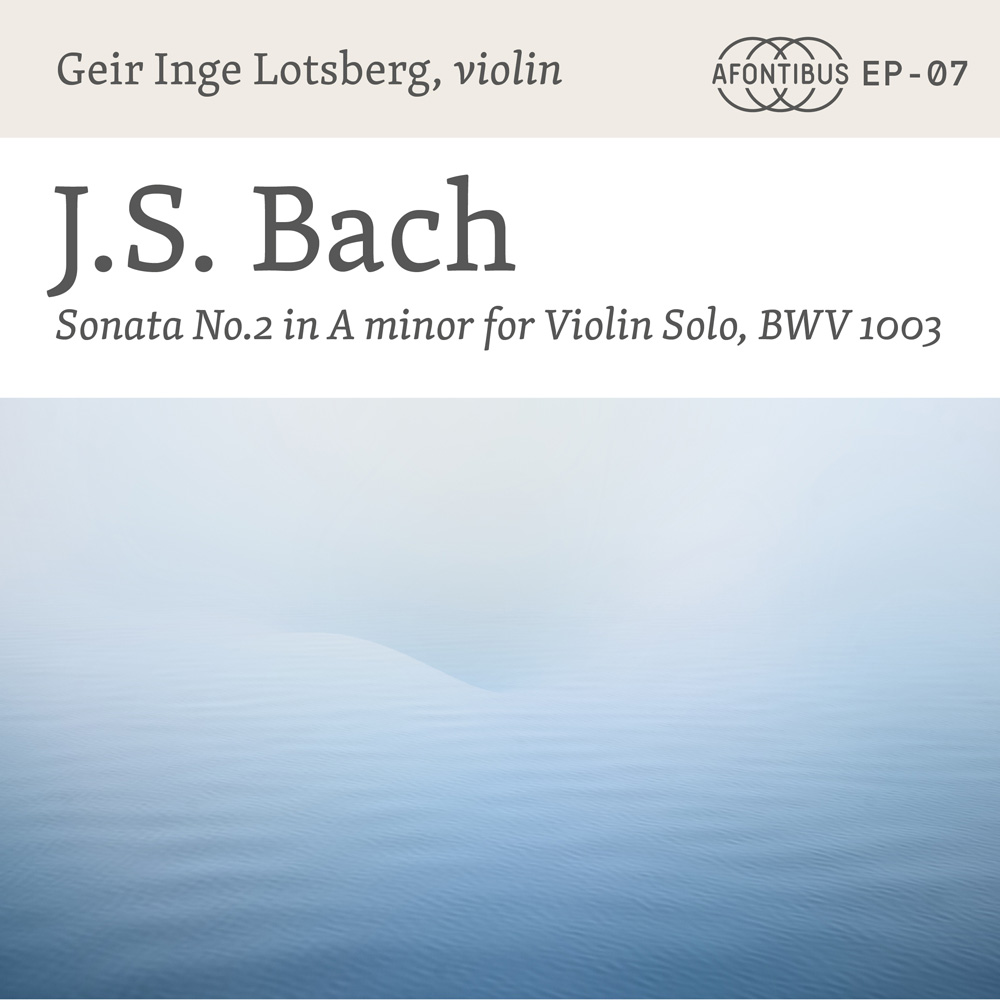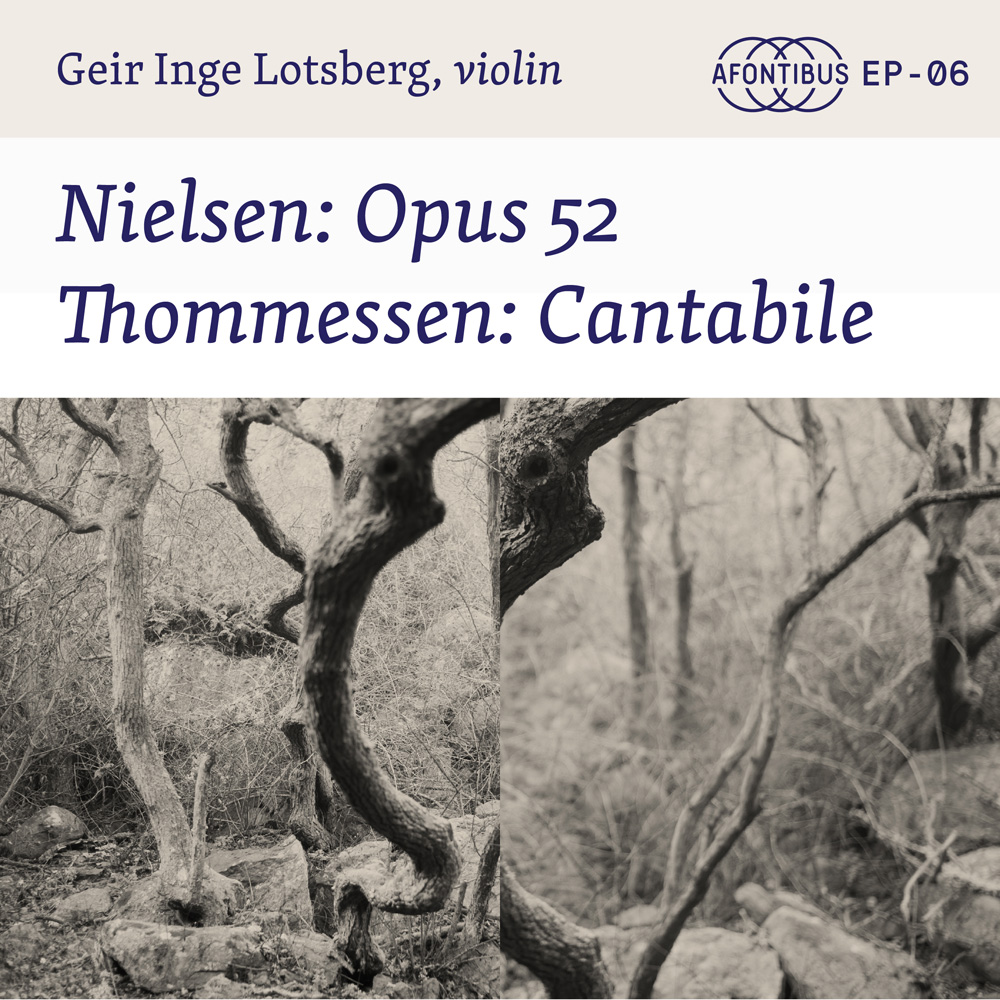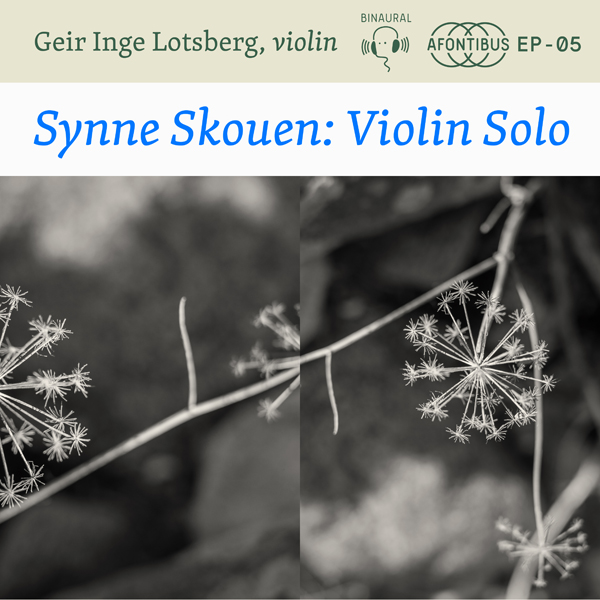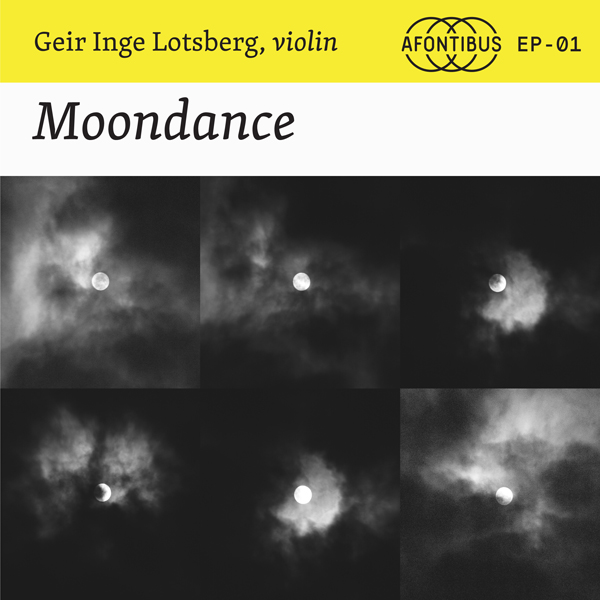
Catalogue Number ATBEP-08 (Digital release)
J.S. Bach: Sonata No.3 in C Major for Violin Solo,
BWV 1005
Spotify Listen from Orchard HDtracks Link to several platforms
- Adagio 04:03
- Fuga 09:44
- Largo 03:38
- Allegro assai 05:27
Artwork by: Erik Johan Worsøe Eriksen
Recording and editing: Geir Inge Lotsberg
Recorded at Grorud kirke in Oslo, 28. & 29. April 2025.
Microphones by Neumann. Nagra 6 recorder at 24/96.

Catalogue Number ATBEP-07 (Digital release)
J.S. Bach: Sonata No.2 in A minor for Violin Solo,
BWV 1003
Spotify Listen from Orchard HDtracks Link to several platforms
- Grave 04:27
- Fuga 07:51
- Andante 05:17
- Allegro 05:58
Artwork by: Erik Johan Worsøe Eriksen
Recording and editing: Geir Inge Lotsberg
Recorded at Grorud kirke in Oslo, 21. & 22. February 2025.
Microphones by Neumann. Nagra 6 recorder at 24/96.

Catalogue Number ATBEP-06 (Digital release)
Nielsen: Opus 52 & Thommessen: Cantabile
Spotify Listen from Orchard HDtracks Link to several platforms
- Carl Nielsen: Preludio é Presto, Preludio 07:12
- Carl Nielsen: Preludio é Presto, Presto 03:33
- Olav Anton Thommessen: Cantabile: (Etyde-Cadenza) 12:34
Carl Nielsens Prelude and Presto, opus 52 from 1928 is one of his very last works. It shows how broadly the development of Nielsen’s tonal language reached. The similarities to the Prelude in opus 48 are obvious, but the structure is even looser. The prelude forms the centre of gravity of the composition, with dissonances and polytonality as important elements. The presto is structured like a modulating rondo in three parts. The movement, which is in three four time, consists of a core motif made up of two phrases. The intervals in the core motif are reversed and modulated, but maintain their relation to one another. With the exception of the cadenza and the beginning of the coda this material makes up the whole duration of the piece.
Recording from Grorud kirke in Oslo, 17. & 18. January 2025 using Neumann microphones into a Nagra 6 recorder at 24/96.
Recording and editing: Geir Inge Lotsberg
Design: ERIK(SEN)

Catalogue Number ATBEP-05 (Digital release)
Synne Skouen: Violin Solo
Spotify Listen from Orchard HDtracks
- “Une soirée d’été…” 06:30
- “…à travers les paroles” 06:37
- Give Alice Different Entries 04:32
The first two pieces for violin solo were composed with more than 15 years between them, but the connecting link is an odd little book by french author Marguerite Duras, ”Les Yeux bleus Cheveux noirs” (”Blue Eyes, Black Hair”); a wonderful example of the importance of silence, and how a few hints can create the most intense images. Just as music can – without saying anything in particular – say everything.
”Une soirée d´été..” (”One summer evening..”) is the very first sentence in
“Une soirée d’été…”, subtitled “Meditation sur Marguerite D.”, was composed on commission for the Oslo Chamber Music Festival in 1991, when I was engaged as the festival’s official composer. The title comes from the very first line of an odd little book written by French author Marguerite Duras. The debut performance of the violin solo was planned for just such “a summer evening”, and I was, and continue to be, intrigued by Duras’s ability to create visual images. Some people say that listening to the radio inspires us to imagine the best pictures, but I think that reading Duras is even more inspiring! There is not much else to say about my little musical work.
“…à travers les paroles” (“…in through the words”), like her "Une soirée d’été...", is an attempt to recreate the distinctive atmosphere of sound and silence; here and now, in a text by French writer Marguerite Duras.
The title give @lice different entries actually would need a little circle around the g, the d and the e as well as the@, since it indicates that each of the violinstrings has been given ”it´s own” little piece. give @lice.. thus simply consists of four little episodes, written for the g-, the a-, the d- and the e-string respectively.
Synne Skouen
Design: Erik Johan Worsøe Eriksen
Recorded at Sofienberg kirke in Oslo, 14. December 2021, using Neumann microphones into a Nagra 6 recorder at 24/96.

Catalogue Number ATBEP-04 (Digital release)
Carl Nielsen, opus 48
Prelude, Theme and Variations for Violin Solo. 16:58
Spotify Listen from Orchard HDtracks
Carl Nielsen wrote two pieces as violin solos at the request of the violinist Emil Telmànyi. Nielsen, who was himself a violinist, used the violin’s possibilities to their full extent. His creativity and instrumental knowledge resulted in two rich and unmistakably distinctive pieces.
Prelude and Variations on a Theme, opus 48, from 1923, was composed for the occasion of Telmànyi’s debut concert in London. The prelude is free and improvisatory. The various moods hint at the richness of expression in the main body of the work. The various harmonies of the prelude gather and form the foundations for the key in the theme; F major.
Each of the eight variations is a fine character piece. They show how Nielsen with amazing imagination expresses his musical ideas. As a finale after the last variation a grandiose version of the theme returns with powerful double stopping.
Design: Erik Johan Worsøe Eriksen
Recorded at Sofienberg kirke in Oslo, april 2020, using Neumann and AKG microphones into a Nagra 6 recorder at 24/96.

Catalogue Number ATBEP-03 (Digital release)
Elegy
Spotify Listen from Orchard HDtracks- Secret Psalm by Oliver Knussen 03:52
- Peter Doll zum Abschied by Hans Werner Henze 03:01
- für Manfred by Hans Werner Henze 02:02
- Elegy by Toshio Hosokawa 04:55
- Give Alice Different Entries by Synne Skouen 05:18
Secret Psalm was originally written in 1990 for Nona Liddell to play at the memorial concert for Michael Vyner (1943-1989), Artistic Director of the London Sinfonietta for many years, who began life as a violinist and particularly loved the slow movement of one very well-known concerto, which provided the starting-point for the three "verses" of this short meditation.
In 2003 I reworked Secret Psalm to include in a retrospective concert of my chamber music at Weill Hall in New York, where it was first performed by Jennifer Frautschi. © Oliver Knussen (1952 – 2018)
Hans Werner Henze wrote two brief works for solo violin as memorials for artistic collaborators and associates. Peter Doll zum Abschied commemorates the passing of the theatre director who was the dedicate of Henze's opera "The English Cat". Für Manfred from 1989 marks the passing of writer and television director Manfred Gräter.
Elegy by Toshio Hosokawa (1955) was written as a memorial in 2007 and revised the following year.
"give @lice different entries" by Synne Skouen. The title actually would need a little circle around the g, the d and the e as well as the @, since it indicates that each of the violinstrings has been given ”it´s own” little piece.
give @lice.. thus simply consists of four little episodes, written for the g-, the a-, the d- and the e-string respectively. First live premiere performance was given by Geir Inge Lotsberg 18. November 2012 in Oslo.
Artwork by: Erik Johan Worsøe Eriksen
Recorded at Sofienberg kirke in Oslo, 2. april 2020.
Microphones by Neumann. Nagra 6 recorder at 24/96.

Catalogue Number ATBEP-02 (Digital release)
Virga
Spotify Listen from Orchard- Nicolay Apollyon: Virga 05:28
- Nicolay Apollyon: Fugue 03:54
Several years after I had given the world premiere of the solo sonata Episeme and had recorded it, in 2003-2004, I asked Apollyon if he would compose a shorter piece for solo violin. Unexpectedly, as a gift and a pleasant surprise, the score for Virga arrived in the post in 2009. I was able to play it for the composer in 2010, after which he made a few changes.
Virga proved to be a real challenge. It has taken me quite some time to figure it out, both musically and instrumentally, but I was never close to giving up. The piece generates a number of possible interpretations, and demands intense concentration during execution. Unfortunately, the composer passed away in the summer of 2015, before I made this recording.
Apollyon wrote the following commentary about Virga:
“Virga is a neume, and can be perceived as a ‘full stop’ in the middle of a Gregorian verse at the same time as there is a good flow on either side of it. In this piece there is a situation of constant ‘give and take’, in both dynamics and tempi, and there are contrasts in both cantabile melodies and rough chordal riffs. The fragmentary form can also be designated ‘moment form’, and is built around a small core of an idea about the Virga theorem. I have made use of CAC (computer-aided composition) with the aid of the PatchWork program.”
Fugue, the third and final movement of Episeme, also works well as a stand-alone work. It is a masterful piece, full of energy and drive. The composer uses both the traditional fugue form and the relatively limited polyphonic capabilities of the violin with impressive originality.
Nicolay Apollyon (Kjell Johnsen) (1945-2015) was an organist and composer. He earned a degree from the Oslo Conservatory of Music, and continued his studies in Munich under Karl Richter and in Paris under Jean Langlais and Olivier Messiaen. Apollyon held his debut concert in 1970 and was the organist at Sofienberg Church in Oslo from 1971 to 1984.
As a composer, he often focused on the interaction of computer technology with musical instruments. Apollyon’s music bears the influence of German polyphony, French modernism and the Baroque and Renaissance styles as well as the music of Southeast Asia. He was interested in the origins of music, and worked extensively with the rhythmic and melodic representations of neumes (palaeography and semiotics) that lead to Gregorian antiphony. His music belongs to the “new complexity” tradition whose roots are found in the aesthetic of the serial avant garde.
Recording from Kampen kirke in Oslo, 16. March 2017 using Neumann and AKG microphones into a Nagra 6 recorder at 24/192.
Recording and editing: Geir Inge Lotsberg
Design: ERIK(SEN)

Catalogue Number ATBEP-01 (Digital release)
Moondance
Spotify Listen from Orchard- Þorkell Sigurbjörnsson: Skref fyrir skref (Step by step) 05:19
- Þorkell Sigurbjörnsson: Fleiri skref (More steps) 06:33
- Bjørn H. Kruse: Månedans (Moondance) 11:02
Skref fyrir skref and Fleiri skref are two artful and imaginative pieces that are related to each other. The composer is daring enough to express himself in simple terms. As they share “step” and “steps” in their titles, the works invite the listener to consider movement. The pieces also share a distinctive, nearly covert, polyphonic quality.
My first encounter with Sigurbjörnsson’s music was in the early 1990s when, as a member of the Oslo String Quartet, I participated in recording his quartet “Heimsókn” (Visit). When I searched for new pieces for solo violin these two turned up, and like “Heimsókn”, they have fascinated me ever since.
Bjørn Kruse writes about his piece Månedans:
“Månedans was commissioned by Stig Nilsson, and had its premiere at Ullensvang Church during the Hardanger Music Festival on 1 June, 2001. The concert took place at midnight, when the moon was full (or nearly full…). That’s where the title came from, because I knew when I composed the piece that it would be performed at that time. It had to have a certain magical quality. The summer night. Steep cliffs plunging into the fjord. The moon reflecting off the water and dancing on the waves.”
A version of Månedans for violin and piano also exists, and this is what forms the basis for the violin concerto Nostos. I got to know Nostos very well when I produced a recording of the work. The essence of this piece’s mood made an impression on me, and it wouldn’t let go. From that starting point I began to study Månedans and prepare to perform and later record it. I have been thinking about this piece for many years, have gone back and forth as to how to interpret it, and now finally feel confident about the musical choices I have made.
Geir Inge Lotsberg
Recording from Kampen kirke in Oslo, 7. November 2016
Engineer and mixing: Geoff Miles
Editing: Geir Inge Lotsberg
Design: ERIK(SEN)